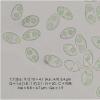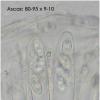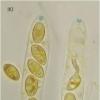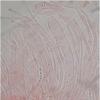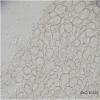
09-10-2017 08:01
 Viktorie Halasu
Viktorie Halasu
Hello forum,would anyone have this paper please? (

04-10-2017 20:05
Hi forum, I can't identify this hyphomycete on ol

07-10-2017 18:07
 Lothar Krieglsteiner
Lothar Krieglsteiner
.. in the Bavarian Forest, in old Dacrymyces still

09-10-2017 19:11
Thorben HülsewigHi there,this Peziza grow on a way with gravel.Cou

08-10-2017 14:01
 Zuzana Sochorová (Egertová)
Zuzana Sochorová (Egertová)
Hello,this fungus was found in Svaneti (Georgia, C

09-10-2017 15:08
 Stip Helleman
Stip Helleman
Dear all,a yellowish presumed cleistothecium (no o

07-10-2017 17:40
 Lothar Krieglsteiner
Lothar Krieglsteiner
.. last week, on Fagus wood, near Zwieslerwaldhaus

06-10-2017 20:43
 Stephen Martin Mifsud
Stephen Martin Mifsud
Dear friends, I have a set of photos of a Peziza l

04-10-2017 22:38
 Chris Yeates
Chris Yeates
Bonsoir tousI recently collected some Urtica stems
Ombrophila ¿?
Garcia Susana,
11-10-2017 13:46
Recogí estos apotecios que crecian sobre madera deteriorada de haya.
Color pardo con tintes violaceos.
Creo que puede ser Ombrophila, quizás O.lilacina.
¿Que opinais?
Gracias y saludos.
Susana
Martin Bemmann,
11-10-2017 13:49

Re : Ombrophila ¿?
Hi Susana,
check (Neo-)Bulgaria pura...
best
Martin
check (Neo-)Bulgaria pura...
best
Martin
Hans-Otto Baral,
11-10-2017 16:55

Re : Ombrophila ¿?
Yes! or Ombrophila pura, if one prefers.
Zotto
Zotto
Garcia Susana,
11-10-2017 19:52
Re : Ombrophila ¿?
Gracias Martín y Zotto
Coincide bien. Me despistó uno poco la textura globosa del excipulo ectal.
Saludos
Susana
Coincide bien. Me despistó uno poco la textura globosa del excipulo ectal.
Saludos
Susana
Hans-Otto Baral,
11-10-2017 20:38

Re : Ombrophila ¿?
Ombrophila/Neobulgaria has not really globulosa, more prismatica.
Garcia Susana,
11-10-2017 21:58
Re : Ombrophila ¿?
Si. Por eso me despisté, yo interpretaba la mía como globosa.
Gracias de nuevo.
Susana
Gracias de nuevo.
Susana

